culture, japanese food, kissaten
Kissaten: Tracing the Rich History of Japan’s Beloved Coffee Houses

Anna Ayvazyan
Posted on May 30, 2023
Share:

Japan is home to various types of tea, especially matcha (green tea). But did you know it has a significant coffee culture too? Let’s explore Japanese coffee culture through their style of coffee shops, the kissaten.
History of Kissaten
For several centuries tea was the primary go-to drink for Japanese people. The first recorded tea shop surfaced in the Edo era in 1735 in Kyoto. However, with the arrival of coffee beans in the 17th Century by Dutch traders, the drinking culture slowly started to change.
Originally coffee wasn’t famous among Japanese people; they thought it was an “overcooked drink.” Then in the late 1800s, Eikei Tei, also known as Tsurukichi Nishimura, opened the first coffee shop in Japan. At the time, he had studied abroad in France and became fascinated by European coffee shops.
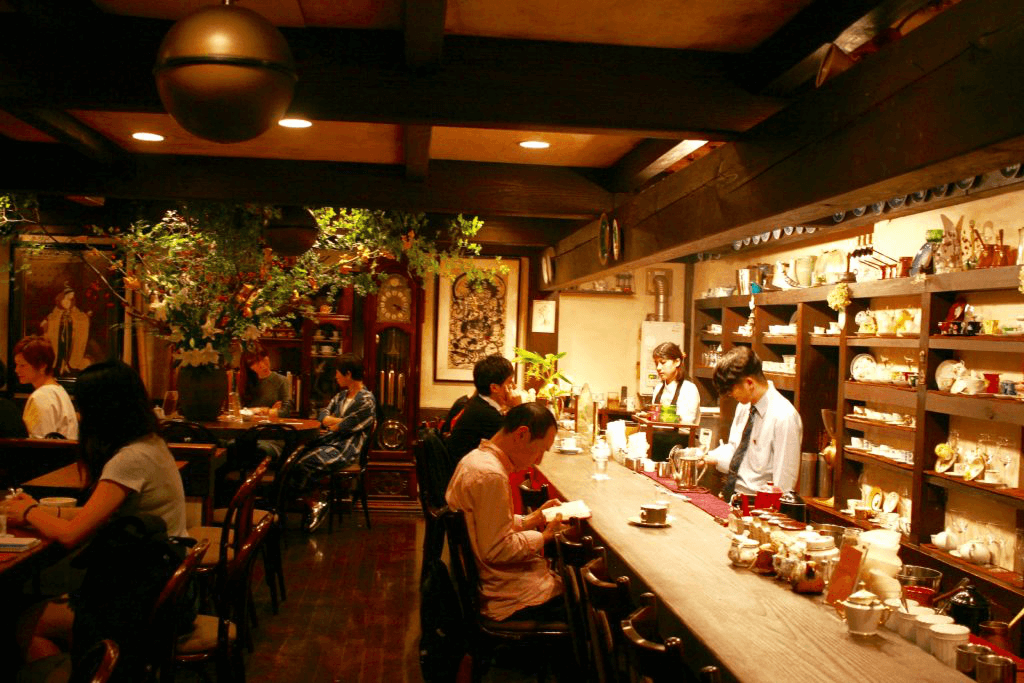
In particular, he was fond of the idea that cafes can be a place for socialization between artists, writers, and friends. So he thought about opening a place in Ueno, Tokyo. The coffee shop was called Kahiichakan, and its design was unique to Japan, with Western decor, leather chairs, newspapers, and plenty of tobacco.
Unfortunately, the coffee shop went bankrupt within five years of opening. Despite the closing, it planted the seeds for the kissaten boom that followed. Kahiichakan is still celebrated today, with April 13th (the day the shop opened in 1883) being called “Kissaten no Hi” (Coffee Shop Day) in Japan. Some coffee shops may provide unique blends or discounts to customers who visit them today!
Kissaten in the 20th Century
Around 1908 many Japanese workers were sent to Brazil. There they worked on coffee farms, and many of them went on to open their coffee shops back in Japan. In 1911 1, a businessman named Ryo Mizuno opened his coffee shop in “Cafe Paulista” in Ginza, Tokyo. The shop sold Brazilian coffee, and it quickly became popular. He soon opened up another twenty-two shops in Japan and Shanghai.
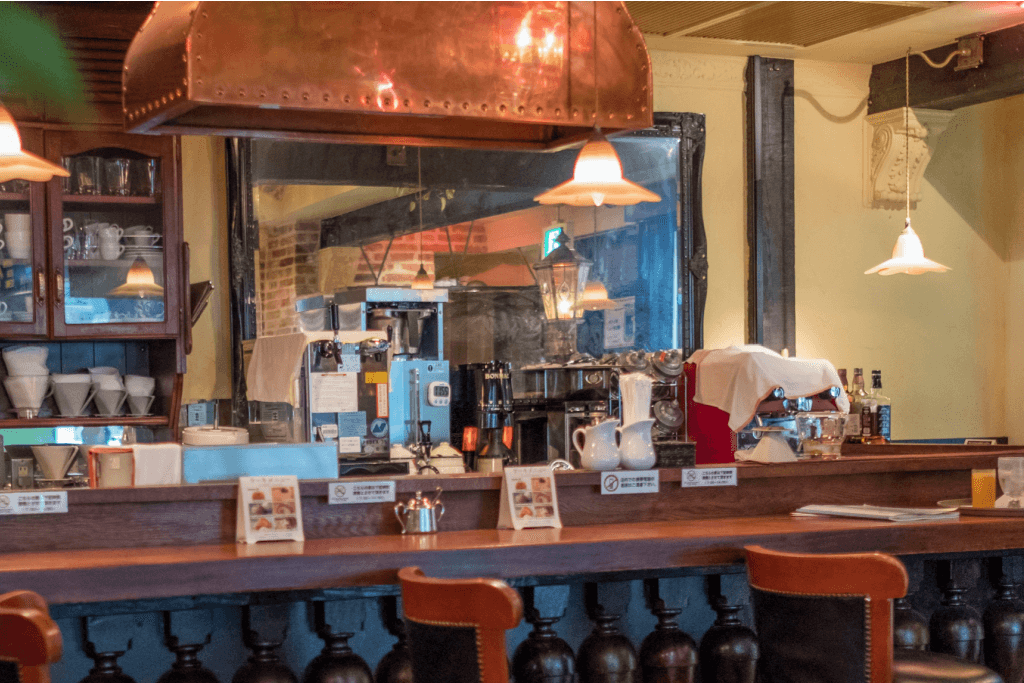
In the 1930s, Tadao Ueshima opened a coffee shop in Kobe and became UCC Coffee’s founder. He is now dubbed the “Father of Coffee in Japan” due to his significant role in establishing the All Japanese Coffee Association in 1980. In the 1930s, there were about 10,000 coffee shops in Tokyo alone!
During the war and its effect on importing coffee beans, there was a brief time when the coffee culture was stagnant. However, the boom returned after the war, and the coffee culture evolved. There became two major categories surrounding coffee shops, those that were kissaten and those that were considered more like cafes.
Are you looking for classic Japanese delicacies to enjoy at a coffee shop? Try Sakuraco! Sakuraco delivers traditional Japanese snacks, sweets, tableware, and more from local Japanese makers right to your door, perfect for a pleasant snack time at home!

What were kissaten like in the later years?
The category of kissaten referred to coffee shops that kept the Meiji/Taisho-era atmosphere, such as the decor, music, low lighting, and smoking. Typically the music played at kissaten was soft jazz or classical. Kissaten also operated independently. On the other hand, Cafes had a brighter and more modern atmosphere and operated in chains.

Cafes started getting much more popular, whereas kissaten had to look for ways to adapt to younger customers’ needs. In 1970 Nagoya opened its first manga-kissa (manga coffee shop), credited with influencing modern manga internet lounges. However, many young people still sought more modern places to drink coffee, so chains such as Doutor and UCC continued opening up.
In 1996 Starbucks arrived in Japan and introduced “Seattle-style” coffee which transformed how coffee was consumed once again. Now Starbucks is the most popular coffee shop chain in Japan. Despite Starbuck’s popularity, many people still enjoy going to kissaten, especially for the nostalgic vibes of the Meiji/Taisho era and for classic dishes such as coffee jelly.
Top 3 Kissaten to visit
There are still thousands of kissaten in Japan, and many retain their nostalgic vibe. Here are the top 3 kissaten to visit in Japan.
Kisa You Ginza
Kisa You is a small kissaten in Ginza that specializes in Omurice. It has been a local favorite for many years because the omurice is delicious and cheap! Another popular dish is the fluffy egg sandwich. The cafe is trendy and usually has a line, but you can make a weekday reservation.

Location: Japan, 〒104-0061 Tokyo, Chuo City, Ginza, 4 Chome−13−17 高野ビル 1F・2F
Cost: 1000-2000 yen
Opening hours: Open every day between 11 am and 4:30 pm
Access: A 1-minute walk from Higashi Ginza Station
Smart Coffee
Smart Coffee is a two-story kissaten in Kyoto specializing in pudding and coffee. It has been active since 1932 and is a popular breakfast place. They provide pancake or french toast sets for 1000 yen. During lunch, they also serve egg sandwiches and steak.
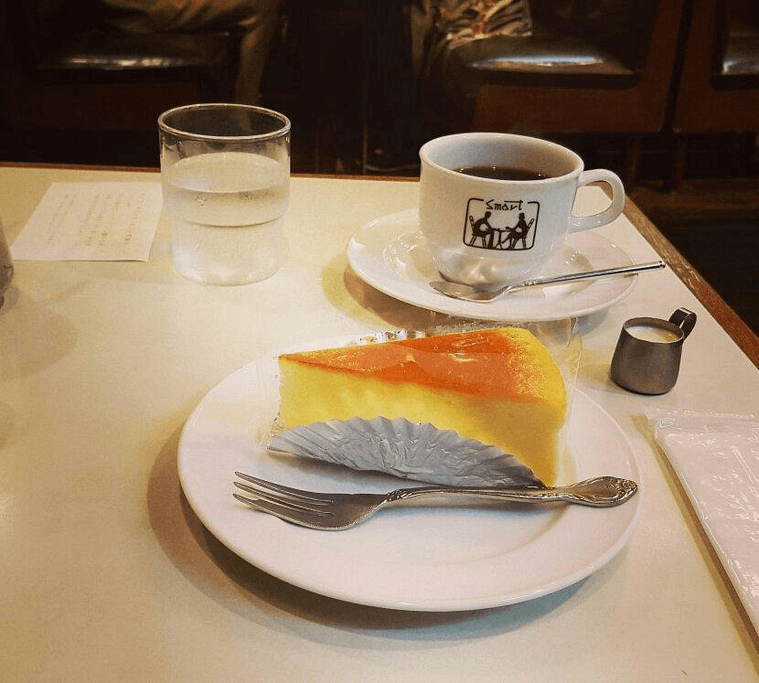
Location: 537 Tenshojimaecho, Nakagyo Ward, Kyoto, 604-8081
Cost: 1000-2000 yen
Opening hours: Open every day between 8 am and 7 pm
Access: A 2-minute walk from Kyoto Shiyakusho-mae Station
Junkissa American
As the name suggests, American is a kissaten with an incredibly retro American coffee house theme in Osaka. This kissaten opened in 1946 and is known for its electric design, particularly the beautiful curved staircase. They offer a range of breakfast and lunch sets; the most popular dish is the omurice (omelet rice) and fruits a la mode dessert.
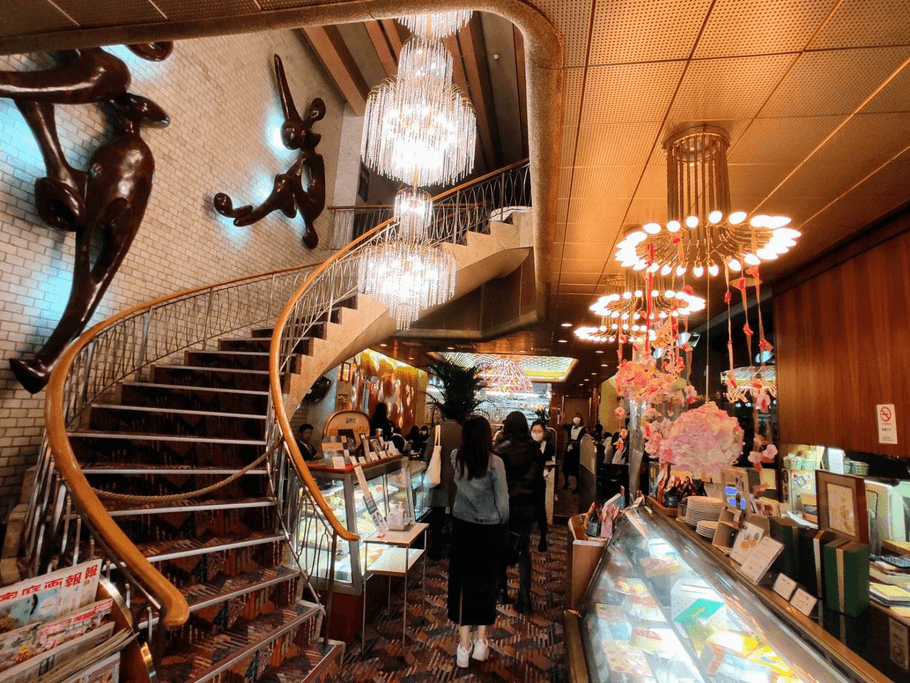
Location: 1 Chome-7-4 Dotonbori, Chuo Ward, Osaka, 542-0071
Cost: 1000-2500 yen
Opening hours: Open everyday between 10 am and 9:45 pm
Access: 5 minutes on foot from Namba Station
Generally, new cafes have been trying to capture the retro feel of kissaten since it is popular with young people. Sometimes you can see a kissaten in anime. It is a popular place for characters to have a first date! What do you like better, kissaten or cafes? Let us know in the comments below!

Discover authentic flavors with Sakuraco
Get Sakuraco 

Discover authentic flavors with Sakuraco
Get Sakuraco 
Related Articles

Mount Fuji Tour: Great Adventures Await You This Summer!
Mount Fuji is one of the most famous landmarks in Japan. People worldwide visit to see its beauty and enjoy exciting yearly outdoor activities!

Mikoshi: Why Are These Portable Shrines So Important?
Japan’s summer festivals are known for their energy, color, and tradition. And at the heart of many lies the mikoshi.

Takachiho Gorge and More Natural Wonders from Kyushu
Kyushu is the southernmost main island in the Japanese archipelago. It is most well-known for its food, but is less famous for its natural beauty. The island contains many landscapes, including serene waters, soothing hot springs, and dramatic rock formations like Takachiho Gorge.
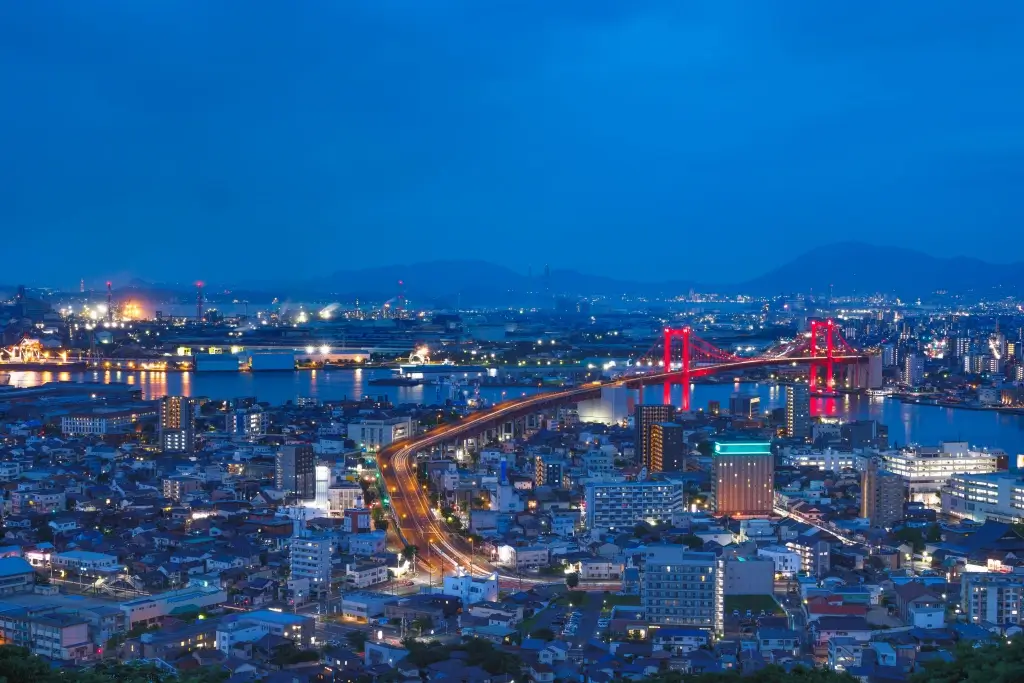
Kitakyushu to Kagoshima: An Amazing Kyushu City Tour!
Visiting these cities can help you understand more deeply how the past and present come together in everyday life. So let’s explore five of the most beloved cities on this fantastic island, starting from Kitakyushu!


